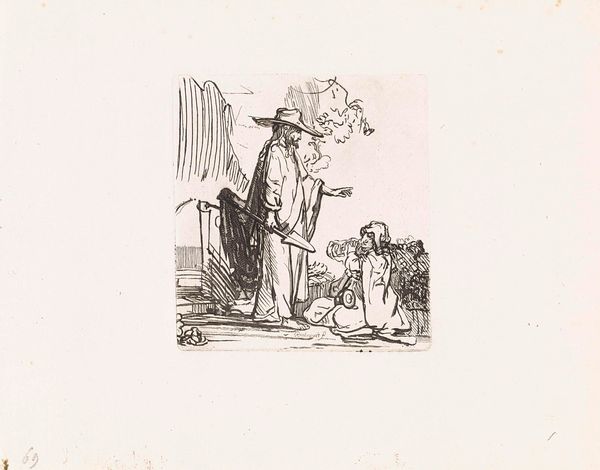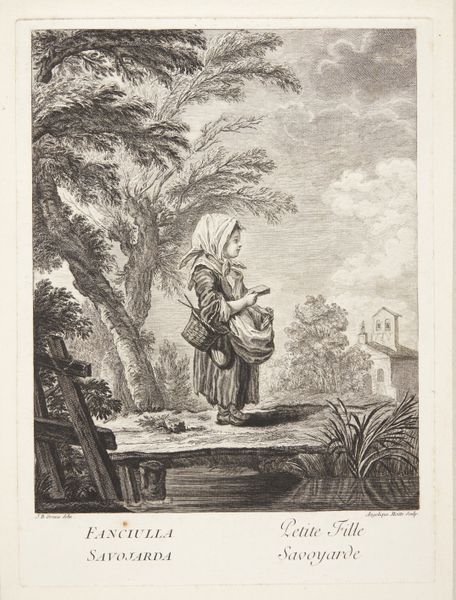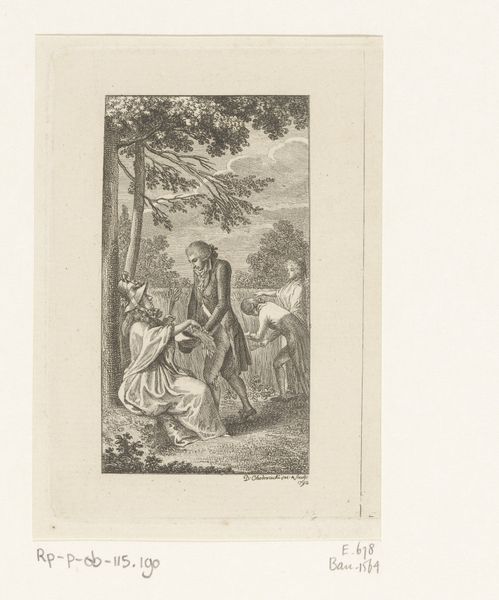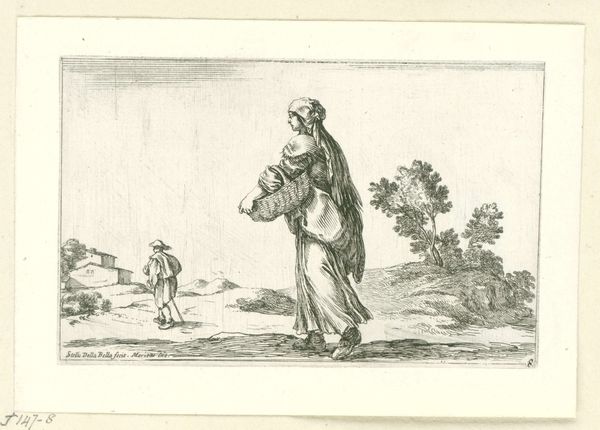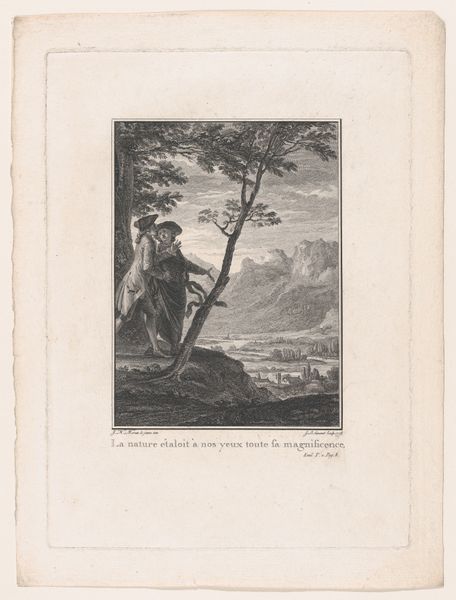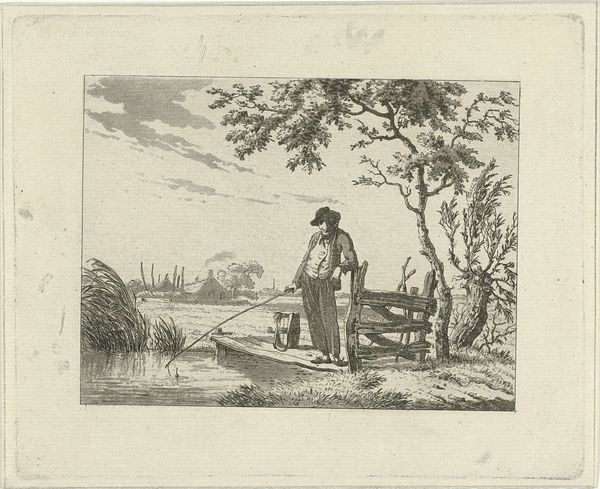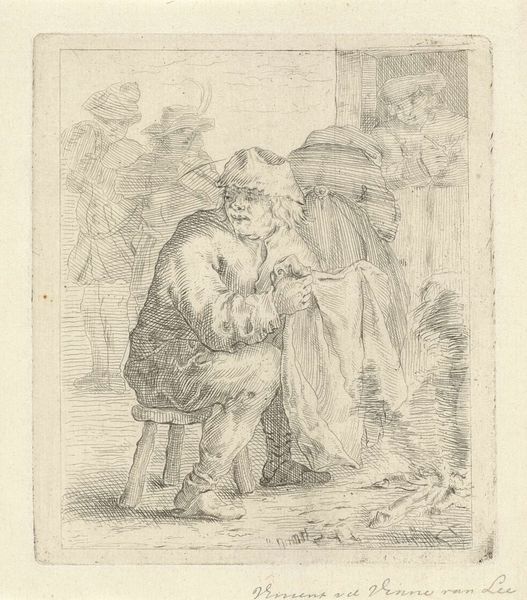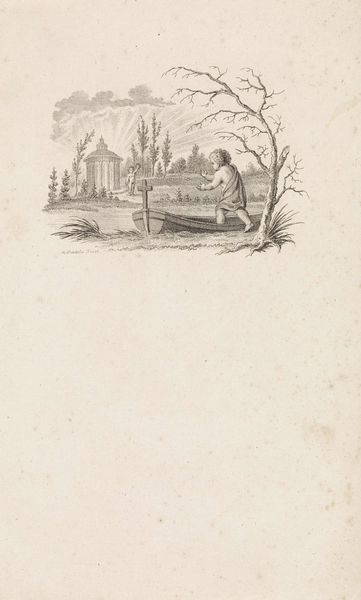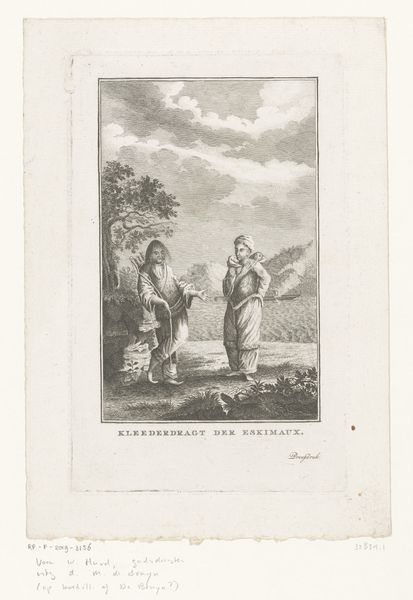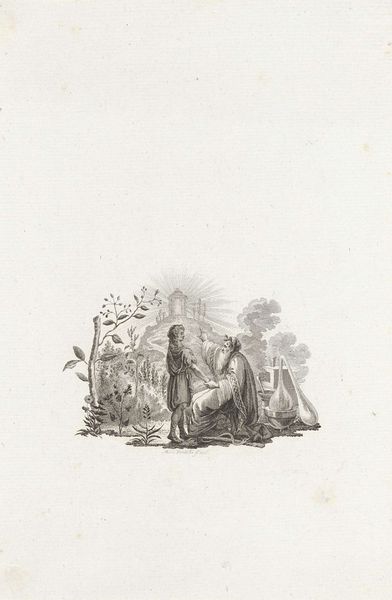
Dimensions: height 205 mm, width 146 mm
Copyright: Rijks Museum: Open Domain
Curator: Here we have "Man Weeping by a Grave," an engraving from between 1751 and 1816, attributed to Reinier Vinkeles, residing here at the Rijksmuseum. It is such an impactful, moving figuration. Editor: It strikes me as melancholy. A very eighteenth-century sort of grief, perhaps. Look at the figure draped against that grand tomb – the lines are so delicate. What kind of paper and inks do you imagine Vinkeles would have worked with for this print? Curator: Likely, given the era and intended market, a relatively standardized paper stock. But, when contextualized, it also reveals societal expectations surrounding death and mourning, particularly for men of this period. Their grief was performative; the grand landscape echoes Romantic notions of man against nature in expressions of heightened emotion. How might Vinkeles' portrayal reflect, or perhaps even subtly critique, such societal pressures? Editor: That's interesting, framing it as performative. From my point of view, thinking about his material choices brings something more visceral. It's the *process* of engraving, carving away at metal, line by line to arrive at such a delicate result - labor. How do materials amplify the emotional quality? I see his fine lines suggesting weakness or vulnerability which challenges norms of Baroque and Classicist composure. Curator: Exactly. This brings a nuance into focus, as Vinkeles could well be leveraging artistic language from these artistic movements to subvert notions of masculine identity within those conventions, layering social expectation atop. We shouldn't overlook the figure on horseback in the background either: a world continuing in its stead. It further contextualizes this image of one grieving man's isolated experience relative to the vast material existence all around him. Editor: Right. The material tells the tale. Considering labor adds another stratum for meaning and interpretation, and lets me read past the art-historical constraints and consider the work from a different frame. Thanks to a fresh look at the medium itself, I'm leaving here thinking less about a generic melancholic figure and instead thinking much more specifically about someone burdened by complex personal and social factors. Curator: Agreed. It's that interplay between art history, the broader social framework and intersectional theory that shapes the most enlightening discourse.
Comments
No comments
Be the first to comment and join the conversation on the ultimate creative platform.
